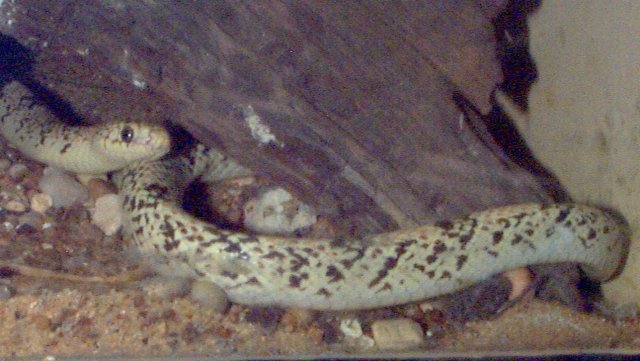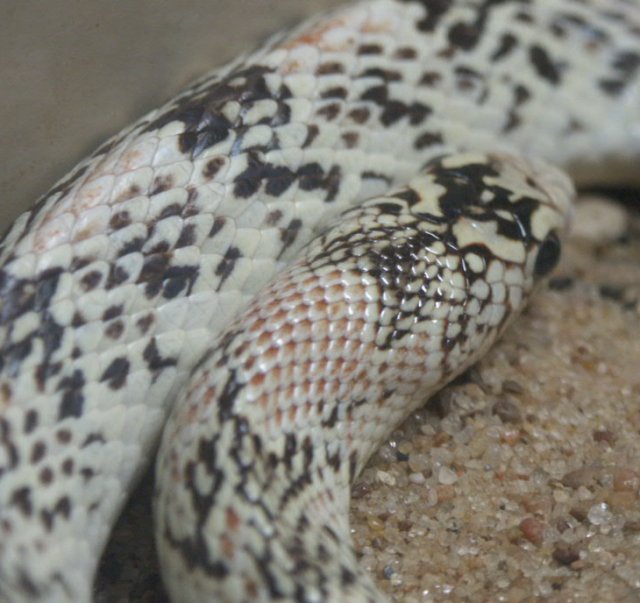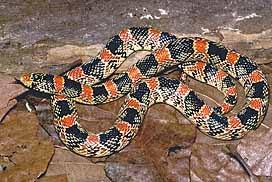
Scientific Name: Rhinocheilus lecontei (Also known as: Western Snake)
Geographical Range: Southwestern United States (California to Texas)
Habitat: Prairies, brush lands, deserts.
Diet in the Wild: Long nosed snakes prey on lizards but eat rodents. They also eat mammals, lizards, lizard eggs and insects. They have also been known to eat small snakes.
Conservation Status: They are not protected.
Location in zoo: Herpetarium
Size: 18.9-29.5 in (48-75 cm)
Distinguishing characteristics: The Long nosed Snake is a tricolor snake. This snake comes in two color variations, black and cream with little red and the cream and black and red with very cream in the red. Its stomach is cream colored. This snake also has a pointed snout. When the snake is young and has minimal red, it can be mistaken for a California King snake.
Similar species: California King Snake
Things to be aware of : It is a gentle species. It vibrates tail when annoyed.
- Nocturnal
- Crepuscular
Seasonal Movements/ Migration: Seasonal movements have not been predicted or reported for this species.
Home
Range: The nature
of the home range in this species is unknown.
Funny
Facts : The long nosed
snake stays very active at night. It hides in rocks. When you try to captured
it, it hides its head, coils up his body, vibrates its tail, and a fluid
is ejected from it . Since they are really a mild manner snake, they can
be captured and shown as a demonstration.
The Animal at the Zoo:
Not currently on exhibit.

Sources and Links:
- http://www.werc.usgs.gov/fieldguide/rhle.htm
- http://www.yahooligans.com/content/animals/
species/4597.html - http://www.wildherps.com/species/ R.lecontei.html
- http://www.dfg.ca.gov/whdab/R060.html
- http://www.coloherp.org/cb-news/cbn-9908/
LongnoseSnake.html - http://www.amnh.org/nationalcenter/
online_field_journal/cp/cprp/cprp_11.html
- Klauber, L. M. 1941. The long nosed snakes of the genus Rhinocheilus. Trans. San Diego Soc. Nat. Hist. 9:289-332.
- Nussbaum, R. A., E. D. Brodie, Jr., and R. M. Storm. 1983. Amphibians and reptiles of the Pacific Northwest. Univ. Press of Idaho. 332 pp.
- Stebbins, R. C. 1954. Amphibians and reptiles of western North America. McGraw-Hill, New York. 536pp.

